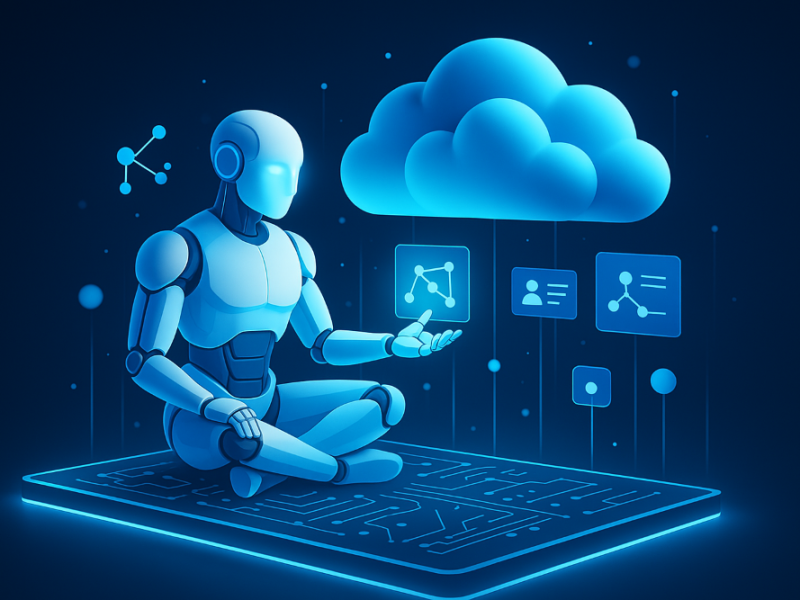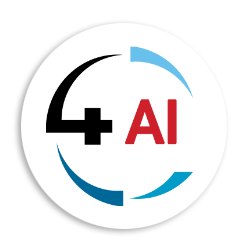Blog - Channel Partner
Beyond Copilot: How Azure is Leading the Charge in Agentic AI

The New Frontier of Automation
In the early days of AI adoption, tools like GitHub Copilot revolutionized productivity by offering autocomplete-like coding suggestions. But in 2025, we're witnessing a sharp evolution: the rise of agentic AI. Unlike traditional AI assistants, agentic AI doesn’t just help you write code—it understands goals, plans actions, executes complex workflows, and learns from its interactions. And no one is investing in this paradigm shift more heavily than Microsoft through its Azure ecosystem.
At Microsoft Build 2025, the company made one thing clear: Copilots were just the beginning. With breakthroughs like Azure AI Agents, GitHub Copilot Extensions, and Azure AI Foundry, Microsoft is laying the groundwork for a world where autonomous agents become core to enterprise and developer workflows.
What Is Agentic AI, Really?
Agentic AI refers to systems that go beyond one-shot responses. These agents can:
- Interpret goals or high-level instructions
- Plan multi-step strategies
- Call APIs or chain tools
- Monitor for updates and feedback
- Adapt based on outcomes
Think of an agent as an intern who can take a business objective like “Analyze customer churn and create a weekly report,” and handle the entire process: querying databases, generating insights, emailing the results, and updating a dashboard—without hand-holding.
Azure AI Agents: Enterprise-Ready Intelligence
Microsoft’s Azure AI Agents give developers the infrastructure to create, deploy, and monitor these goal-driven entities. Built on Azure OpenAI and integrated with Azure Machine Learning, these agents are:
- Modular: Easily integrate with APIs, databases, or enterprise tools
- Secure: Governed with identity management and auditing via Azure Active Directory
- Scalable: Deployable across cloud-native environments, from Kubernetes to serverless functions
Imagine a supply chain management agent that monitors inventory, forecasts demand, places orders, and alerts logistics—all running autonomously in the Azure ecosystem.
GitHub Copilot Extensions: The Bridge to Agent Behavior
Another major leap is the evolution of GitHub Copilot through its new Extensions framework. These let Copilot go beyond code suggestions to:
- Spin up dev environments
- Run test suites
- Refactor codebases
- Connect with Azure APIs
It’s not quite fully autonomous yet, but it’s moving from "assistant" to "collaborator." Combined with Azure AI Agents, this enables scenarios like:
- A Copilot that checks for security vulnerabilities, suggests patches, and files GitHub issues
- An agent that reviews pull requests, applies linting rules, and enforces compliance policies
Azure AI Foundry: The Agent Factory
One of the most strategic moves Microsoft made was launching Azure AI Foundry, a toolkit and runtime environment for building, testing, and shipping agentic systems. It supports:
- Integration with OSS tools like LangChain, Semantic Kernel, and AutoGen
- Fine-tuning and evaluation pipelines
- Deployment in secure enterprise contexts
For example, a customer service org could use AI Foundry to build a task-specific agent that parses support tickets, assigns priorities, routes to the right department, and follows up for resolution—all within Azure’s governance boundaries.
Agentic AI in Action: Real Scenarios
Let’s look at a few real-world examples where agentic AI is already proving transformative:
- DevOps Automation
- Agents review logs, detect anomalies, rollback failing releases, and generate incident reports.
- Finance Operations
- Agents reconcile accounts, monitor for fraud patterns, and send alerts or file compliance forms.
- Healthcare
- Agents analyze patient records, flag anomalies, schedule appointments, and even draft treatment summaries.
With the Azure AI platform, all of this happens under enterprise-grade control, with robust observability and compliance baked in.
The Benefits: Why It Matters Now
The shift to agentic AI isn’t a buzzword. It unlocks:
- Speed: Tasks that took hours can now run in minutes
- Scale: Thousands of operations executed without human bottlenecks
- Accuracy: Consistent application of logic and rules
- Learning: Agents can improve based on new data and feedback loops
Azure offers a rare combination: cutting-edge AI models, enterprise security, and cloud-native tooling. That makes it uniquely capable of supporting this next wave of intelligent automation.
Challenges Ahead
Of course, it’s not all plug-and-play. There are still major challenges to navigate:
- Guardrails to prevent agents from going rogue
- Auditing and explainability
- Task generalization vs. overfitting
- Cost control as agent complexity grows
Microsoft is addressing many of these with tools like Azure Prompt Flow, Responsible AI dashboards, and the open governance model behind Semantic Kernel.
The Future is Agentic
We’re entering an era where software won’t just follow instructions—it will carry out missions. And Azure is becoming the launchpad. If Copilot was the spark, agentic AI is the wildfire. Developers, architects, and business leaders should start exploring what agents can do in their own stacks. CSP Reseller partners should explore how they can solve customer problems and build for the future.
From automating workflows to rethinking how software is built and deployed, agentic AI will reshape everything. And with Azure’s ever-expanding capabilities, you don’t have to wait to start. The tools are here. The use cases are real. The future is now.
Reach out to us at This email address is being protected from spambots. You need JavaScript enabled to view it. to discuss how Agentic AI can be deployed and used to transform a business.


